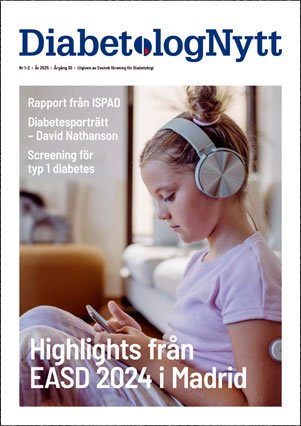Ambulatory Glucose Profiles includes four key metrics to improving glycemic control.
Although hemoglobin A1c (HbA1c) has been the gold standard metric for diabetes control since the landmark study, Diabetes Control and Complications Trial Study, it has its problems.
As the A1c is only an average of the preceding 120 days, it masks the occurrence and frequency of dangerous high and low blood glucose levels. For example, the Juvenile Diabetes Research Foundation Continuous Glucose Monitoring Trial reported that patients with an HbA1c level of 6.4% (comment DiabetologNytt: DCCT; Mono S Sweden 5.4% or IFCC 46 mmol/mol) spent nearly 100 minutes a day in the hypoglycemic range (<70 mg/dL; <2,9 mmol/l)).
Bergenstal et al has proposed a solution using a tool called the Ambulatory Glucose Profile (AGP) which incorporates four key metrics in guiding diabetes treatment including: time in range (TIR), glycemic variability (GV), glycemic exposure, and ranges for hypo- and hyperglycemia.
Despite the lack of a validated link between diabetes complications and time in a specified glycemic zone, TIR is an intuitive parameter that is also advocated by the Juvenile Diabetes Research Foundation. This parameter allows for interventions to assist in reducing hypoglycemic episodes.
GV is a reflection of both hyper- and hypoglycemic exposure. Although data is conflicting about the link between GV and diabetic complications, it is known that non-diabetic patients do not experience the variability in glucose ranges that are seen in diabetic patients.
Glycemic exposure represents mean and median glucose values and will allow insight to the effects of exercise, food, and insulin dosage.
Lastly, the ranges for hyper- and hypoglycemia will allow for standardization of care by assigning a low, medium, and high value for each glycemic state.
http://www.ncbi.nlm.nih.gov/pubmed/23451792 Aaron J. Kowalski and Sanjoy Dutta. Diabetes Technology & Therapeutics. March 2013, 15(3): 194-196. doi:10.1089/dia.2013.0060.
Diabetes Technol Ther. 2013 Mar;15(3):194-6. doi: 10.1089/dia.2013.0060. Epub 2013 Mar 1.
It’s Time to Move from the A1c to Better Metrics for Diabetes Control.
Kowalski AJ, Dutta S., Source, Juvenile Diabetes Research Foundation, New York, New York.
Nyhetsinfo
www red DiabetologNytt


